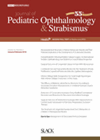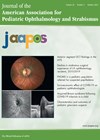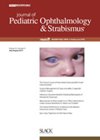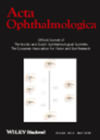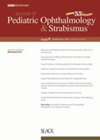You searched for "glaucoma"
Scheimpflug imaging in paediatric glaucoma
The authors undertook this study to report the corneal tomographic characteristics of eyes that had surgery for controlled primary congenital glaucoma (PCG) compared to a control group. The study included 44 eyes of 27 children (18 males) having surgery for...Trab360: surgical management of childhood glaucoma
1 April 2020
| Tasmin Berman
|
EYE - Glaucoma
This multicentre retrospective interventional case series reports the outcomes and complications of trabeculotomy ab interno using the Trab360 device in childhood glaucoma’s. Forty-six eyes of 41 patients were included and had a mean follow-up of 14.5 months. Mean preoperative intraocular...
Clinical and management strategies in glaucoma practice: perspectives from international glaucoma specialists
1 April 2015
| Keith Barton, Winifred Nolan, Nick Strouthidis
|
EYE - Glaucoma
Management options and outcomes in glaucoma practice were reviewed at the 7th Moorfields International Glaucoma Symposium, held in London on 24 January 2015. This article summarises perspectives from international glaucoma specialists on debated issues in topical therapy, glaucoma surgery, diagnostic...
Risk factors identified for glaucoma progression in paediatric glaucoma suspects
A retrospective case review was conducted of children (<18 years) identified as being glaucoma suspects using common clinical criteria or the Childhood Glaucoma Research Network definition. Exclusion criteria included penetrating ocular trauma, treated ocular hypertension / glaucoma and use of...The science of glaucoma management: highlights of the 2020 Moorfields International Glaucoma Symposium
Held earlier this year, the 12th annual Moorfields International Glaucoma Symposium provided a forum for advanced clinical and scientific exchange in glaucoma management. The authors describe the key presentation themes and debates, highlighting specific topics of interest to glaucoma specialists....Glaucoma-NET: a novel way of improving glaucoma management in sub-Saharan Africa
1 June 2022
| Fatima Kyari, Affiong Ibanga, Adeola Onakoya, Heiko Philippin, Winifred Nolan, William Dean, Marcia Zondervan, Covadonga Bascaran, Andrew Tatham
|
EYE - Cornea, EYE - General
Background Glaucoma is the second most common cause of blindness worldwide [1]. People with untreated glaucoma suffer from irreversible, progressive loss of sight. The disease is characterised by progressive loss of visual field, with pathological cupping of the optic disc...
Glaucoma management after congenital cataract
The purpose of this study was to retrospectively explore the results of surgical intervention for glaucoma after congenital cataract surgery in Egypt. The study included 41 eyes of 32 children with glaucoma after cataract surgery – 57 procedures; 90% having...Update on primary angle closure glaucoma
1 June 2016
| Bheemanagouda Patil
|
EYE - Glaucoma
This review article considers primary angle-closure glaucoma which is responsible for half of glaucoma-related blindness worldwide. Angle closure is characterised by appositional contact between the iris and trabecular meshwork. It tends to develop in eyes with shallow anterior chambers, anteriorly...
Atopic dermatitis: Risk of glaucoma progression?
4 December 2024
| Su Young
|
EYE - Glaucoma
This population-based retrospective cohort study from December 5, 2003 to December 3, 2018 examined 528,469 patients with glaucoma with a diagnosis of atopic dermatitis (AD) based on diagnostic claim codes from the TriNetX Research Network, which contains real-time information on...
Progression in the Early Manifest Glaucoma Trial
1 August 2016
| Brian Ang
|
EYE - Glaucoma
The Early Manifest Glaucoma Trial (EMGT) had previously demonstrated without doubt that intraocular pressure reduction decreased the risk of progression in patients with early glaucoma. In this analysis of 306 eyes over eight years from the EMGT, perimetric and optic...
Glaucoma surgery in Sturge-Weber syndrome
The authors report the largest retrospective study of surgical results of goniotomoy and trabeculectomy for 42 patients (46 eyes) with glaucoma associated with Sturge-Weber syndrome (SWS). There were 18 males and 24 females, and 62 goniotomy procedures (51 goniotomy surgery,...Contemporary glaucoma therapy: spoilt for choice
1 April 2014
| Rod McNeil
|
EYE - Glaucoma
The goal of glaucoma management is to prevent visual loss and disease progression in the patient’s lifetime through effective lowering of intraocular pressure (IOP), the primary modifiable risk factor in glaucoma. Sustained and consistent IOP reduction is key to halting...

